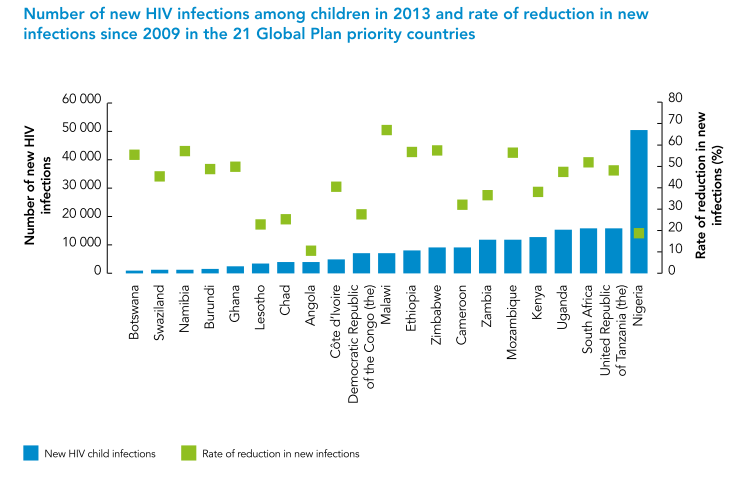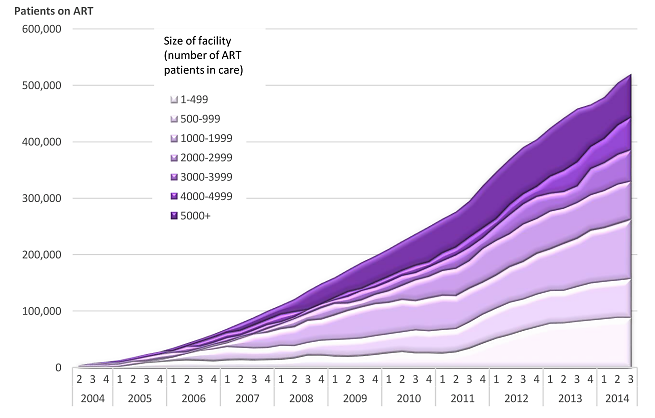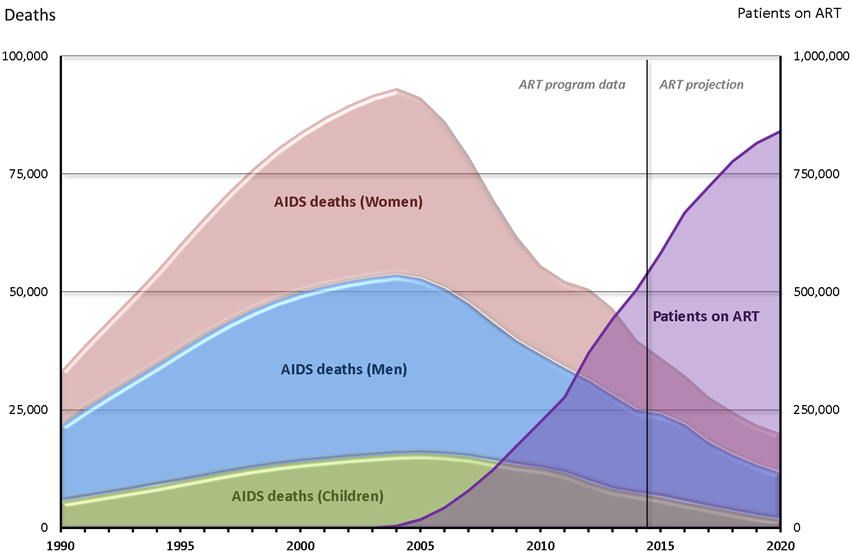- Details


- Details
The 2014 UNAIDS Gap Report recognizes Malawi’s tremendous progress towards eliminating mother-to-child transmission of HIV. According to the latest epidemiological projections, Malawi achieved the largest reduction in infant infection rates in the world:
Infant HIV infection rates declined by 67% between 2009 and 2013
This achievment was based on a new policy for the prevention of mother-to-child transmission - developed and first implemeted in Malawi in 2011 - making life-long ART available for all HIV infected pregnant and breastfeeding women, regardless of clinical stage or CD4 count. This has resulted in a 66% reduction of vertical transmission within 3 years. This Malawi-pioneered strategy has since been included in global guidance by World Health organisation (WHO). As of February 2014, 12 other African countries were implementing Option B+.

- Details
Malawi has passed an important milestone in June 2014: Over half a million patients are now alive on ART!
This is equivalent to 50% of the total HIV positive population and it means that close to 1 out of 20 Malawian adults is now living on ART. This achievement seemed purely aspirational only a few years ago.

Each quarter since 2005, the Department of HIV and AIDS has published an HIV Program Reports with many service statistics and program updates.
Here are some of the highlights from the latest Integrated HIV Program Report for July - September 2014:
- Over 550,000 people were tested for HIV and received their results this quarter
- 89% women at ANC had their HIV status ascertained
- 85% of all HIV positive pregnant women in the population were on ART
- The ART program scale-up has continued 'right on track' with 521,319 patients alive on ART by end September 2014
- Details
Malawi's latest National Strategic Plan for HIV and AIDS (2015-2020) aims to meet the ambitious 90-90-90 Treatment Targets released by UNAIDS in 2014, preparing to control the HIV epidemic by 2030.
By the end of 2020, Malawi will have:
- Diagnosed 90% of all people living with HIV (PLHIV)
- Started and retained 90% of those diagnosed on ART
- Achieved viral suppression for 90% of patients on ART
Reaching these 90-90-90 targets in 2020 will result in 760,000 (73%) of the projected 1,042,000 PLHIV being virally suppressed, leading to a dramatic reduction in sexual and vertical transmission at the population level.
Early Antiretroviral treatment (ART) is the most powerful intervention available to prevent HIV morbidity and mortality, particularly in the context of Malawi's health services with limited capacity to diagnose and manage HIV-related diseases. There is overwhelming evidence, including from Malawi, that early ART reduces the risk of TB and AIDS-defining illnesses.

Malawi's rapid and successful ART scale-up from 2004 to 2014 has critically influenced the HIV epidemic, reducing mortality, morbidity, and transmission.
In the one decade since starting the national treatment program:
- 275,000 deaths have been averted
- 1 out of every 20 Malawi adults is now on ART